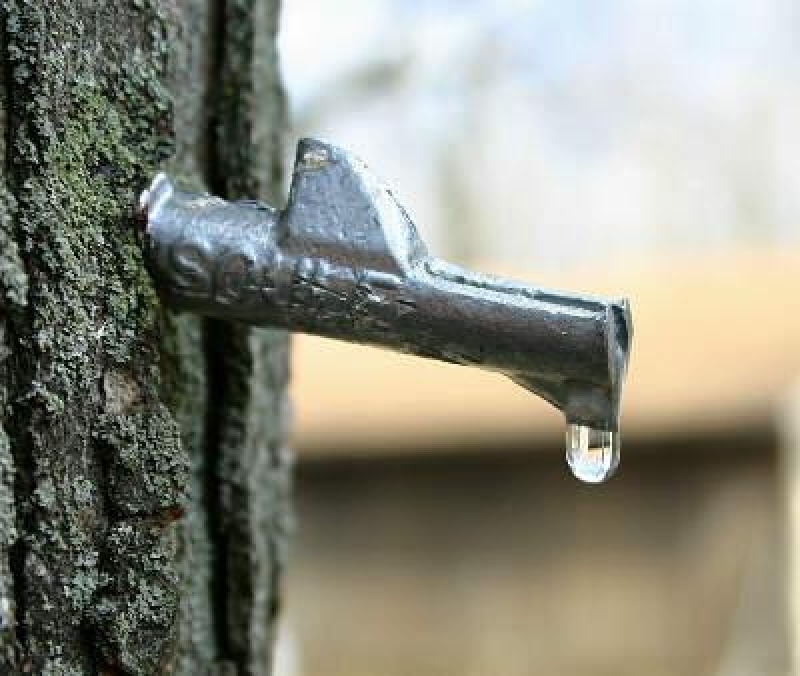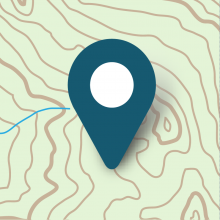
North Country Gold
Now is the time to relish the unique flavors of North Country syrup. Maybe you have noticed the North Country's eager response to the March weather in the form of blue tubing, metal buckets or the sweet smell of condensed sap-water boiling away. Although starting late, the sugaring season is now in full swing. This weekend is MapleWeekend in the North Country. For the next two weekends, March 22nd-23rd & 29th-30th, over 110 maple operations all over the north country of different sizes will be opening their doors from 10 - 4 and welcoming you and your family in for a visit. The visits will include tours of different maple syrup processing set-ups, taste testings, recipes for maple products, and good old north country fun. If you're looking to have a sweet time, or start up a new system, or refine an old one, now is the time to talk boilers, tubing methodology, and flavor grading. Whether your maple operation consists of 1 bucket and your own stove top or hundreds of taps, miles of blue tubing, and a boiling apparatus the size of a small elephant, the eager anticipation of that first batch of amber gold is tangible.

Just before the season got truly started Nature Up North and some St. Lawrence students visited sugaring expert Charlie Hitchman. Charlie works with Cornell Cooperative Extension's (CCE) sugar bush boasting a larger operation with over 1000 taps. Although too cold to visit the maple trees on this February morning, Charlie sat us down and gave us a lesson in sugaring, starting with an explanation of the biological process of sap collection.
Since the first thaws of late February, the North Country has experienced the usual springtime confusion of March weather. Freezing nights followed by unexpectedly sunny days. Under the warming sun the maple trees start pulling water and stored winter starches (or sugars) from their roots to their hungry twiggy tips. How this process physically happens, and why it only happens in certain trees is still being debated and was recently commented on by local arborist Paul Hetlzer in his article "What Makes sap flow in the North Country Spring". The cold nights force the water back down while sterilizing and sweetening the sap with natural anitfreezing agents. Meaning, during this freezing and thawing there is a unique access to increased sterilized sugars as the sap flows up and down the tree. This finicky weather, combined with the long winter and a wealth of sugar maple trees is what makes the North Country one of the U.S.'s primary maple producers. Although 10 states have some sort of Maple Syrup production, only three (Vermont, New York and Maine) have over a million taps and produce upwards of half a million gallons of syrup a year. Charlie explained that due to the lack of processing facilities in New York State, most North Country syrup ends up being bottled and sold as Vermont Maple Syrup. Last season CCE made over 200 gallons of syrup. This means during the 2 months of sap flow there was over 8000 gallons of sap collected from the roughly 1000 taps in the Maple Grove. Recently, CCE experienced a fire in their evaporating system and we hope that they will be up and running again soon.

CCE's sap collection system, which is mostly tubing and has just recently switched over to vacuum pumps, are indicative of the changing landscape of sugaring today. With things like reverse osmosis becoming regularly employed, the old system of buckets, taps and hand collected is being used by fewer serious sugarers. These innovations in the Mapling Industry came about in the 1970's, prior to this, even the large operations where done with buckets, taps and hand collection. The new innovations were necessary to keep profit margins possible, as Charlie explained, the vacuum pump system gathers more sap per tree and the sap even starts with a higher sugar content; making for a shorter boiling process that requires less fuel.
Charlie says a sure sign the season is over are, "when the maple's start budding". So now is your chance to head out in the last half a month of sugar season and learn about a unique and delicious North Country tradtition by exploring your neighborhood sugar producers this weekend.. Sap is on the move and it is time to taste the syrup!

Some Maple Myths!
1) Maple syrup has been flavoring North American food since far before the pilgrims. Discovered first by The Native Americans the secret of sweet sap has been around for a while. Thomas Jefferson even planted a Maple Grove at Monticello in 1791.
2) Syrup can be made out of more than just the Maple Tree. For instance, birch syrup is on the rise.The reason Maple Trees, and not just any maple tree but the Sugar Maple, has traditionally been tapped is due to the high sugar content of the sap at, 3-5%. However, with enough sap and boiling, many tree's sap can produce syrup.
3) It takes 40 gallons of sap with normal levels of sap sugar (3-5%) to create 1 gallon of syrup with sugars at (66-67%). Some people wonder why maple syrup is so expensive.
4) Tapping does not harm trees. Some trees have been tapped for over 150 years or more. Most trees aren't tapped until they around 30 years old or 12 inches in diameter.
5) Pure Maple Syrup has one of the lowest calorie levels of sweeteners at 200 calories in 4 TBS and provides enhanced antioxidant levels as well as zinc.

